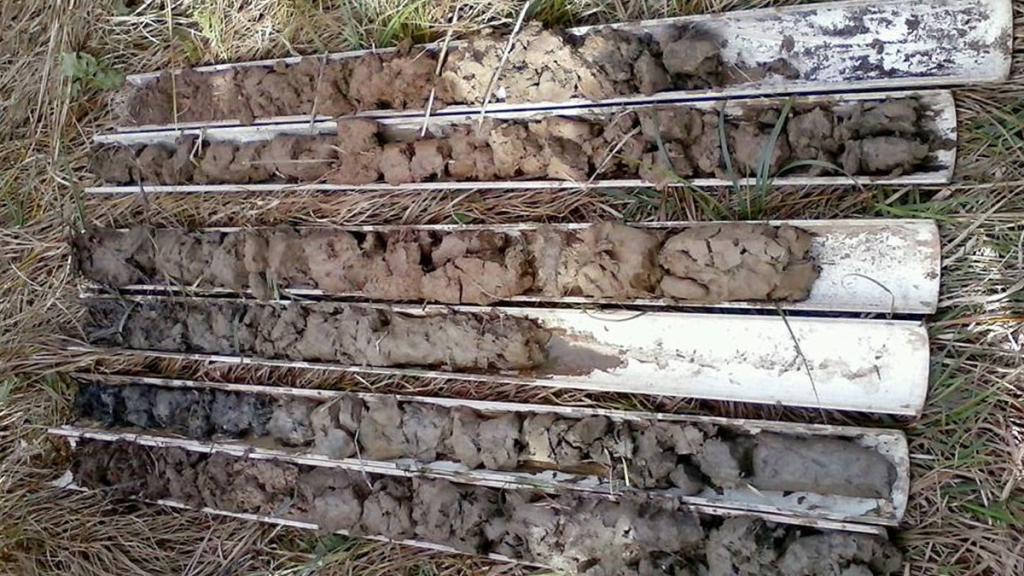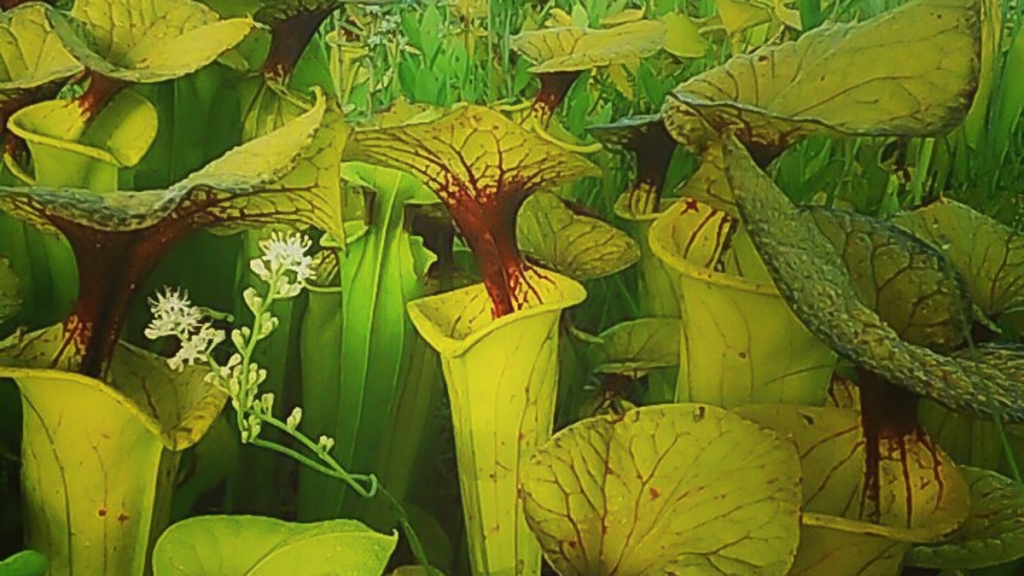Wetlands provide a wide range of services, such as water purification, wildlife habitat, and flood control. But what exactly is a wetland? Wetlands are transitional zones between land and aquatic ecosystems. Wetlands are characterized by three things: saturation, the presence of hydric (low-oxygen) soils, and hydrophytic (water-loving) plants. Let’s explain these one by one!
Saturation
This first characteristic is obvious: wetlands are wet (saturated), at least periodically. The amount of saturation can vary greatly between wetland types. Some wetlands are flooded only seasonally.
For example, ephemeral pools are small depressions that fill with water in late winter and spring, but then dry by late summer. These pools provide excellent breeding habitat for frogs and salamanders. But you won’t find fish in these pools, which are predators of amphibian eggs and larva, because fish need year-round water.

Other wetlands such as lake and river edges are saturated more permanently. They provide foraging grounds for animals like herons, muskrats, and turtles.
In freshwater wetlands, precipitation is usually the primary factor influencing saturation. During large rain events or snow melts, depressions fill with water and rivers sometimes overflow their banks into the surrounding floodplain. Other wetlands are groundwater dependent. They are depressions that dip into underground stores of water, which makes them much less sensitive to droughts and seasonal changes.
Saturation in saltwater wetlands is primarily influenced by the tides. Low-elevation marshes get inundated twice daily with the high tide. High marshes get flooded less frequently when heavy wind or storm events push ocean water towards land.
Hydric (low oxygen) soils
Wetlands are also characterized by the presence of hydric soils. Hydric soils are soils that lack oxygen due to permanent or seasonal saturation. In drier soils, there are pores between soil particles where air moves. However, when soil is flooded, water fills the pores and prevents the flow of air. This creates the lack of oxygen, called anaerobic conditions. And this influences some of the processes that can take place in these hydric soils.
Most decomposers such as microorganisms and earthworms require oxygen. Because hydric soils are oxygen poor, organic material tends to build up rather than decay. Wetlands that are permanently flooded develop a thick organic layer, made of carbon-containing materials. Because of this buildup, wetland soils serve as important “carbon sinks” – areas that store carbon reducing carbon dioxide in the atmosphere, which is a greenhouse gas.

Hydrophytic (water-loving) plants
Hydrophytic translates directly to “water loving”. We all know that the green parts of plants take in carbon dioxide and produce the oxygen that we breathe. However, plant roots also require oxygen for respiration, the process of taking in oxygen to produce energy. Hydrophytic plants are specially adapted to growing in saturated soils with low oxygen levels.
Plants have a variety of ways to cope with low-oxygen soils. Mangroves are trees that grow in saltwater wetlands. They have special roots called pneumatophores that extend above the water line, acting like a snorkel. The roots of cattails have chambers called aerenchyma containing spongy tissue. This creates internal pathways for the flow of air. Plants like duckweeds have abandoned soil altogether and instead float, roots and all, on top of the water, where they get their oxygen.

Depending on the type of wetland, plants may have other adaptations that allow them to overcome the challenges of that ecosystem. Cypress trees have roots that spread out from the trunk, called “knees.” They help to form wide buttresses that prop the tree and keep it upright during large floods. Carnivorous plants such as Venus fly-traps, pitcher plants, and sundews thrive in the nutrient-poor soils of bogs by trapping and digesting insects.
There is a great diversity of wetlands, from forested swamps to coastal saltmarshes, but what unites them all is saturation or flooding with water, oxygen-poor soil, and water loving plants.
David Tilson, University of Georgia. Follow David on Instagram: @wetlandwonder
To receive notices about future blogs, be sure to subscribe to Soils Matter by clicking on the Follow button on the upper right! Explore more on our webpage About Soils. There you will find more information about Soil Basics, Community Gardens, Green Infrastructure, Green Roofs, Soil Contaminants, materials for Teachers and more.

3 thoughts on “How are wetland plants and soils different from drier soils?”